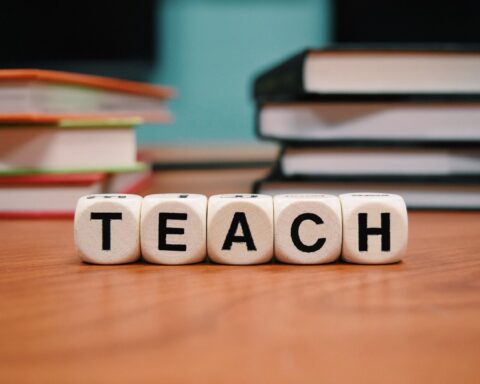Evidence-Based Methods of Instruction
Background

A widely recognized key to a nation’s or region’s development is access to quality education. Equipped with education, people become better parents, reducing infant mortality and disease, encouraging better school attendance, and being more able to provide a nurturing environment for their children.
Research shows that educated people often have fewer children to care for, find more employment, and make more money. They are better able to diversify their wealth, use personal wealth in ways that benefit their children and family, and participate more effectively in civic engagement. In short, educated people enjoy an improved quality of life. [1] Other things can and do contribute to these outcomes, but education is believed to work towards these ends almost anywhere where it occurs or where its quality is improved.
However, studies also show that children in the majority world (what many once referred to as the “third world”) remain in school fewer years than their counterparts in western industrialized nations and learn considerably less while there. There are numerous reasons for this.
___________________________________________
The EBMI Project in Madagascar is the first time an entire, nation-wide school system will attempt routine use of these methods in its schools as the preferred way of teaching.
___________________________________________
For starters, the average primary school class in ‘low-income’ nations has a learner-to-teacher ratio of 60:1 or worse. [2] The attitudes of parents in the majority world are often less than optimal in terms of encouraging school or supporting it in other ways and parental attitudes toward school may even be quite detrimental. The need for child labor often draws children out of school early to help improve families’ incomes, and concerns over young females being approached by boys and young men chill enthusiasm for girls’ education in particular.
 Finally, the financial incapacity of parents to afford their child’s so-called ‘free’ education (uniforms, notebooks, and writing materials are almost never provided) contributes additionally to students leaving school early. Even with all of these factors taken into account, one of the most common traits of school-leavers is that they are typically not doing well in their studies and that many may be outright failing.
Finally, the financial incapacity of parents to afford their child’s so-called ‘free’ education (uniforms, notebooks, and writing materials are almost never provided) contributes additionally to students leaving school early. Even with all of these factors taken into account, one of the most common traits of school-leavers is that they are typically not doing well in their studies and that many may be outright failing.
The UN Millennium Development Goal [3] for universal primary education and ‘Education for All,’ [4] the millennium goal’s companion initiative, have certainly made progress regarding access to primary education. However, a special task force by the World Bank [5] some years ago was one of the first groups to formally observe the widespread, unwitting, negative effect of these efforts.
The task force found that these ambitious aims, vigorously promoted by leading economic and organizational powers, [6] all but required majority world countries to push their children into free public schools at unparalleled levels. The unanticipated result of having 100% enrollment in the early grades, however, was over-crowded classrooms, dramatic reductions in the quality of teaching, and very high school-leaving rates in the first few years of school.
___________________________________________
The EBMI Project is important not only because it will improve the lives of every child who goes to an FJKM school but also because improving the quality of education is a primary way the PC(USA) is attempting to address the root causes of poverty.
___________________________________________
A good example of this was revealed in a recent study conducted by the government of Ethiopia. [7] It found that more than 55% of students left school before grade 8. Those surviving until grade 8 averaged a score of just 39% correct on cumulative final exams in major subjects. Getting two out of five ‘right’, however, can hardly be construed as a high level of academic achievement. Ironically, the millennium goal promoting 100% enrollment was nevertheless met.
 In partial recognition of these unwanted side-effects of large percentage enrollments, the last two decades have seen a greater focus on the quality of education students receive and on identifying those methods of teaching that actually work in various contexts. For example, which ways of teaching have the best results in objective, empirical findings? Which were best supported by replications of published studies in peer-reviewed professional journals?
In partial recognition of these unwanted side-effects of large percentage enrollments, the last two decades have seen a greater focus on the quality of education students receive and on identifying those methods of teaching that actually work in various contexts. For example, which ways of teaching have the best results in objective, empirical findings? Which were best supported by replications of published studies in peer-reviewed professional journals?
World Literacy Initiative, an NGO that seeks to act as an impartial advocate on behalf of learners, educators, and education in the majority world, set out to identify and share these evidence-based methods by examining this very question. By 2010, it had identified, field-tested, and published the results of its efforts in an effort to share knowledge of the most effective methods of teaching. Because these methods were all identified solely on the basis of each method’s abundant evidence favoring its use, the methods were called “evidence based methods of instruction” or EBMI for short.
EBMI project in Madagascar
 Despite EBMI’s successful use in two other sub-Saharan African nations, the EBMI Project in Madagascar is the first time an entire, nation-wide school system will attempt routine use of these methods in its schools as the preferred way of teaching. The Presbyterian Church (U.S.A.)’s partner church in Madagascar is the Church of Jesus Christ in Madagascar or FJKM as it is abbreviated from the Malagasy version of its name. [8] The FJKM operates a school system of 723 primary and secondary schools, serving between 107,000 and 185,000 learners nationwide. [9]
Despite EBMI’s successful use in two other sub-Saharan African nations, the EBMI Project in Madagascar is the first time an entire, nation-wide school system will attempt routine use of these methods in its schools as the preferred way of teaching. The Presbyterian Church (U.S.A.)’s partner church in Madagascar is the Church of Jesus Christ in Madagascar or FJKM as it is abbreviated from the Malagasy version of its name. [8] The FJKM operates a school system of 723 primary and secondary schools, serving between 107,000 and 185,000 learners nationwide. [9]
Right now, FJKM schools average only 60% correct on cumulative final exams across all grades and subjects. Students are failing to learn many things that they need in order to succeed in the subjects of the following year’s grade. Saddled with an increasing deficit of critical prerequisite knowledge every year a learner is in school, the probability for school-leaving increases to a most regrettable level.
There is hope however. The promise of EBMI is that academic performance will be substantially higher once the methods have been systemically adopted. Estimates of how well learners will learn after changeover range from learners achieving an average of 80% (instead of 60%; a 1/3 improvement) on cumulative exams up to even 90% for certain subjects.
The Role of EBMI in World Mission
The EBMI Project is important not only because it will improve the lives of every child who goes to an FJKM school but also because improving the quality of education is a primary way the PC(USA) is attempting to address the root causes of poverty (one of its three critical global initiatives [CGIs]). Additionally, a second CGI addressed by the EBMI project is Evangelism – bringing the good news of God’s love to school-aged children. [10]
Demonstration of EBMI

The process of sharing EBMI in Madagascar began with a two-term demonstration of it that was held in Antananarivo, the capital city, last January through July. This demonstration was simply an illustration for administrators and decision-makers to view so that they could better judge how well EBMI would meet the needs of the FJKM. [11] In May 2014, FJKM and PC(USA) administrators attended a briefing and showcasing of the methods.
Because of the ample objective evidence favoring use of these methods and an unambiguous set of results from prior field-testing and this most recent demonstration, FJKM officials have asked the PC(USA) for assistance in changing over its nationwide school system to the use of these methods. The PC(USA) has agreed, and as the mission co-worker in the country, I will serve as the principle project administrator until an FJKM counterpart can be identified and trained. The project will then be rightly ‘owned and operated’ by the FJKM. It is however anticipated that the PC(USA) will continue providing support and assistance throughout the conversion process.
Preparing for Systemic Change
Currently, training teachers at the Betela Ambodimita Ambohimanarina School is continuing on a limited basis. However, teacher training per se, at least for the time being, is taking place only as a by-product of the primary strategy of training senior level project administrators from the FJKM. The focus now is also more on helping project leaders to learn more about a variety of things believed necessary to a successful collaboration involving systemic change.

This effort will provide planners with a fundamental understanding of the system being changed, as well as identifying and solving many issues and problems inevitable in large-scale change before very many schools are involved.
This effort will address:
- More fully understanding the FJKM curriculum as it is taught;
- Discovering informal aspects of education as it is presently accomplished in Madagascar;
- Refining strategies for applying the methods with the FJKM-based curriculum, and
- Beginning to develop standardized training materials for teachers and teacher educators.
Among all the things that EBMI may represent to the FJKM and its young learners, for me, EBMI represents hope. Hope for a better future, the hope of making the best fruits of the gifts of God to each child, and hope for a stronger Church of Jesus Christ of Madagascar.
________________________________________________
[1] Benefits of Primary Education, the World Bank – http://www.worldbank.org/ieg/education/facts_figures.html.
[2] Herz, Barbara and Gene B. Sperling. 2004. What Works in Girls’ Education: Evidence and Policies from the Developing World (p.69). New York: Council on Foreign Relations.
[3] Goal 2 – Achieve universal primary education, The Millennium Development Goals (2000 – 2015).
[4] The Education for All (EFA) movement is a global commitment to provide quality basic education for all children, youth, and adults. At the World Education Forum (the Dakar Framework for Action, 2000), 164 governments pledged to achieve EFA and identified six goals to be met by 2015. Governments, development agencies, civil society, and the private sector are working together to reach the EFA goals.
[5] EFA Global Monitoring Report to the United Nations, the World Bank’s Independent Evaluation Group (IEG), UNESCO’s Institute for Statistics, Oxfam Education Report, and M. Boissiere, IEG, 2004.
[6] Including the United Nations/UNESCO, the World Bank and the leading economic powers (i.e., the G-20 and other primary donor nations).
[7] These nationally representative data are summarized from the Education Statistics Annual Abstract 2005/6 (Ethiopian calendar); the Ministry of Education, the Government of Ethiopia.
[8] Fiangonan’i Jesoa Kristy eto Madagasikara, or FJKM.
[9] The number has varied somewhat due to the plummeting economic conditions of the nation where 23 of 25 people strive to survive on just $2/day or less. This increasingly negative economic pressure forces children from school for a variety of related reasons. See earlier discussion touching on this point.
[10] This conclusion is drawn in part because the curriculum in Madagascar includes religion. Naturally, children who learn better, read better, comprehend and remember better, etc. will understand religion, religious beliefs and spirituality better than if they do not. Thus, improving learning will make for better students of the living word of God.
[11] Because of funding limitations for the demonstration, only a single classroom (grade one math) was used in the actual demonstration, which lasted just two academic terms. Class averages of learners who were in the class the full term on cumulative final exams were 90% and 97%, respectively for the two terms. Because of teacher interest, other teachers at the same school were invited to participate but were and are not the focus of the demonstration which is now concluded.
AUTHOR BIO: Jan has been working in Africa since 2001. She received her doctoral training at the University of Florida in Gainesville, FL, as a research psychologist specializing in analyzing methods of teaching, and uses that training to work with effective teaching methods in her ministry. In 2010, she wrote and published ‘Teaching Methods That Really Work! – Evidence Based Methods of Instruction (EBMI)’, a collection of the most effective teaching methods known based only on objective evidence that appears in peer-reviewed scientific journals. She currently serves as mission co-worker of the PC(USA) in Madagascar, where she works in education sharing effective methods of teaching, advising women and children’s programs that, among other things, fight human trafficking and sexual tourism, and as a management/leadership consultant to the Church of Jesus Christ in Madagascar
Visit pcusa.org/jan-heckler to remain informed about the EBMI Project and to support Jan Heckler’s ministry in Madagascar.
Read more articles in this issue: Pedagogy for the Distressed!





Unbound Social